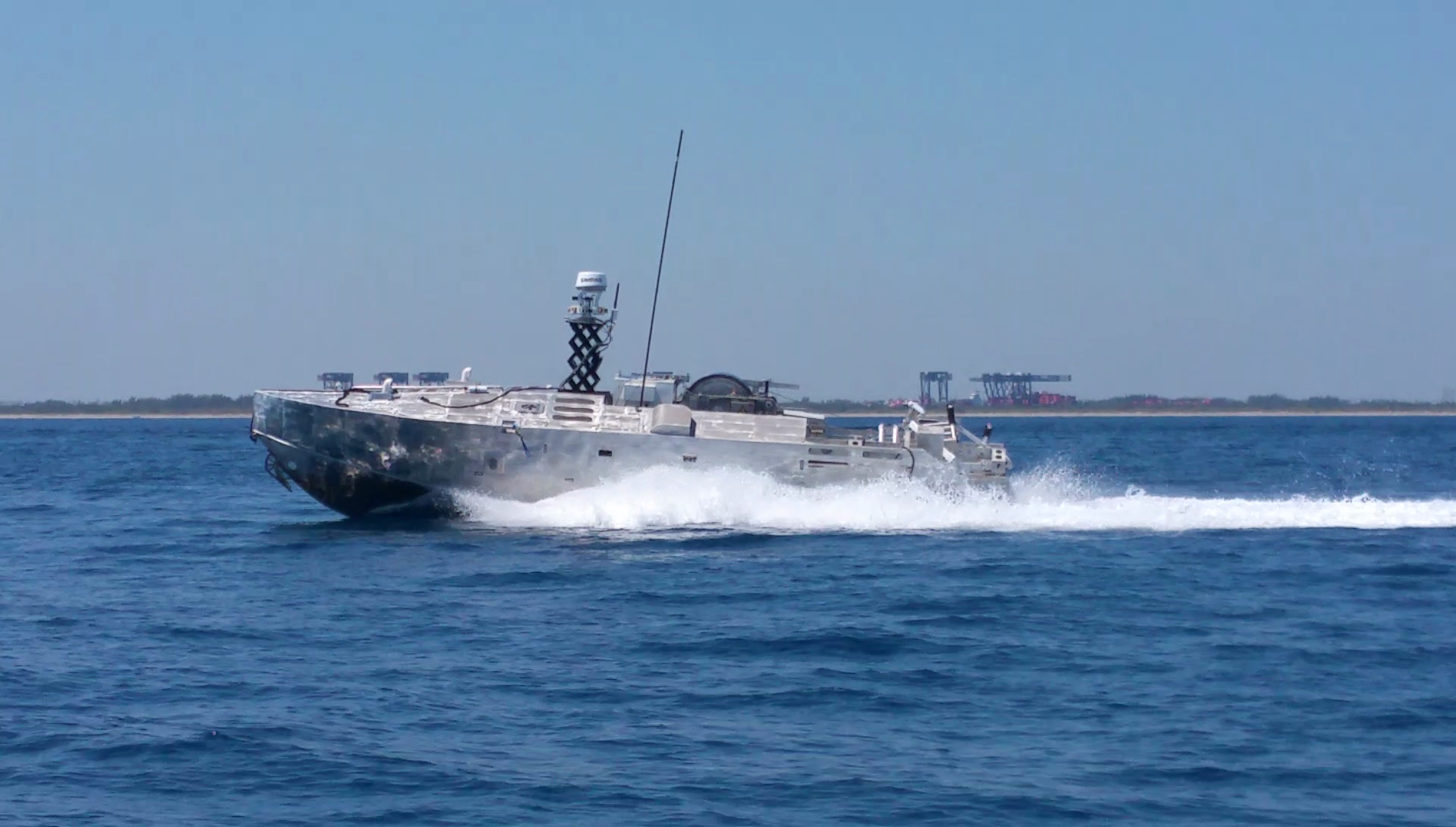
Changes in the Navy’s unmanned mine hunting plans may help Textron Systems maintain a hot production line for its Common Unmanned Surface Vehicle (CUSV) ahead of next year’s expected move into low-rate initial production for the unmanned craft in its original mine sweeping role.
The Navy in 2014 awarded Textron a contract for one engineering development model (EDM) CUSV that would tow a mine sweeper, filling the role of the Unmanned Influence Sweep System (UISS) in the Littoral Combat Ship mine countermeasures program. Last year the Navy decided it would look at CUSV as a potential mine hunter as well, and last week awarded a $14.8 million contract for two more vehicles, one of which would use the AN/AQS-20A minehunting sonar and the other which would use the AN/AQS-24B airborne and surface mine hunting sonar.
“While we work to complete the UISS EDM system, which will be through builders trials this year and then the Navy will go through developmental testing and operational testing in sailor-led events by the third quarter of [Fiscal Year 2018] – while that’s occurring, we’ll be producing those two additional CUSVs for the mine hunting mission and working with the Navy to develop and design the integration elements for those two additional sonars,” Wayne Prender, senior vice president of control and surface systems, told USNI News on April 4 at the Navy League’s annual Sea-Air-Space exposition.
Construction of the two mine hunting CUSVs would wrap up around next summer, Prender said, around the same time that the Navy might be ready to make a Milestone C decision to move CUSV in its mine sweeping role into low-rate initial production.
This timing would be beneficial for the entire CUSV program, Prender said.
“It allows us to take lessons learned from the EDM system, as well as our own capital asset we’re building, and to now roll those into these two pilot line so we get some learning, we find additional efficiencies we can implement,” he said.
“It keeps the manufacturing line going and those workers focused on that task rather than being reallocated to another program. So that should dovetail very nicely into a Milestone C decision, and then we’d move into LRIP, so there’s no break in production. The lessons will be learned and implemented so that by the time LRIP comes along those craft will be now more mature, more reliable and better overall for the Navy.”
The first CUSV craft is “progressing well,” Prender said, though the craft is behind the company’s previously stated schedule. Prender said the vehicle finished component-level testing in January and has since been conducting initial underway testing. In March the craft was moved from Slidell, La., where it was constructed and integrated, to the Navy’s South Florida Test Facility.
“In March, April, May, end of June we’ll be finishing our system integration testing, bringing the whole system together, testing out communications, the data link, exercising the payload, basically making sure the system is fully operational,” Prender told USNI News.
“We’ll then move into builder’s trials, and that’s where we’ll start running mission scenarios and requirements verification.”
After contractor-led trials will come Navy-led developmental and operational test and evaluation, likely culminating in a decision to move into production.
“We’re certainly anticipating that in FY 18 Milestone C will be successful and that will then allow us to start moving into additional craft for LRIP,” Prender said.
The company had previously expected its first vehicle to deliver to the Navy by the beginning of 2017 and hoped to see a LRIP contract signed by the third quarter of FY 2017, or around now.
Though the first vehicle is running behind that previous schedule, Prender said he believed the next two vehicles, which the Navy would use to test its Q-20 and Q-24 sonars, would be delivered to the Navy by the end of 2018, with construction complete and in-water testing beginning next summer.
“We will put both of those on these CUSVs, one on each, and then the Navy will use those two craft to continue to evaluate how the unmanned surface vehicle and those sonars work in tandem to perform that mission set,” Prender said.
Beyond mine sweeping and mine hunting, Prender said he thought the CUSV would be well-suited for mine neutralization as well, or even mission sets outside of mine countermeasures. He said mine neutralization would be the next logical mission set to go after, but the company is also looking at intelligence, surveillance and reconnaissance (ISR) – including with a tethered unmanned aircraft operating from the CUSV for better situational awareness – maritime domain awareness, port security, anti-submarine warfare, communications relay or manned/unmanned teaming.
“The ability to do that is because of the design of the CUSV – that open modular payload bay, the flexible open architecture that the system is built off of,” Prender said. Textron currently has two prototypes it built for the Navy ahead of the 2014 EDM contract award, plus a third “capital asset” vehicle the company is building now, which can all host experiments with new payloads or modifications.
“Those three systems are going to allow us flexibility in testing out new payloads and new capabilities, and we’ll do that on research and development dollars, internal research and development dollars,” he said, adding that Textron is not looking at making any major changes to the CUSV vehicle itself but would seek reliability improvements where possible.





